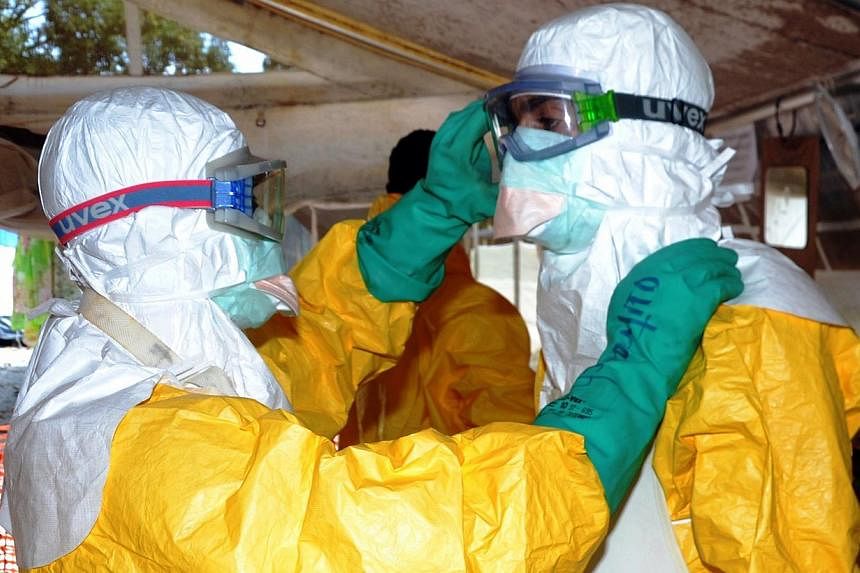BRUSSELS - Inside the eight-piece protective suits worn by doctors on the front lines of the Ebola outbreak, the temperature reaches at least 46 deg C. But one of the most dangerous moments on the job is going through the 12 steps to take the suit off, which can take 30 minutes.
On a field behind a logistics warehouse in Brussels, Doctors Without Borders runs a training camp for medical staff heading to Ebola hot spots in West Africa.
After a full day of classroom instruction - on everything from the preparation of chlorine solutions to how to safely bury the dead - 12 participants gather inside a tent that simulates an emergency treatment centre.
They are here to learn that if they wear glasses, they need anti- fog spray to cope with 90 per cent humidity. Not an inch of skin can be exposed, and the protective hood should cover the eyebrows. They should breathe and move slowly to deal with the suffocating heat. They are advised to have lots of extra socks as they will become soaked in sweat, and wet socks can lead to blisters.
The death toll in the world's worst Ebola epidemic has now soared past 3,000, with the virus killing 3,091, or almost half of the 6,574 people it has infected across five West African countries, according to World Health Organisation (WHO) figures released last Saturday.
There may be 21,000 cases by November - in Liberia, Sierra Leone and Guinea - if control efforts are not quickly increased, WHO said last week.
Health-care workers, already in very short supply in the impoverished countries hardest-hit by the outbreak, have paid an especially heavy price. As of Sept 23, 375 of them had been infected and 211 had died - highlighting the need for protective gear and training on wearing and removing it.
One of the riskiest steps is taking off the suit without touching the exterior that may be compromised with infectious blood or other fluids. In between stripping off each item - two sets of gloves, apron, goggles, hood, coverall, mask, boots - hands must be washed in chlorinated water.
After each use, the protective clothing, which costs about €60 (S$97) a set, is incinerated with other medical waste.
The International Medical Corps, another group fighting the Ebola outbreak, says a treatment facility with 70 patients goes through about 200 sets of protective clothing a day. A 50-bed treatment centre costs about US$1 million (S$1.26 million) a month to run, the group said.
WASHINGTON POST, AGENCE FRANCE-PRESSE

